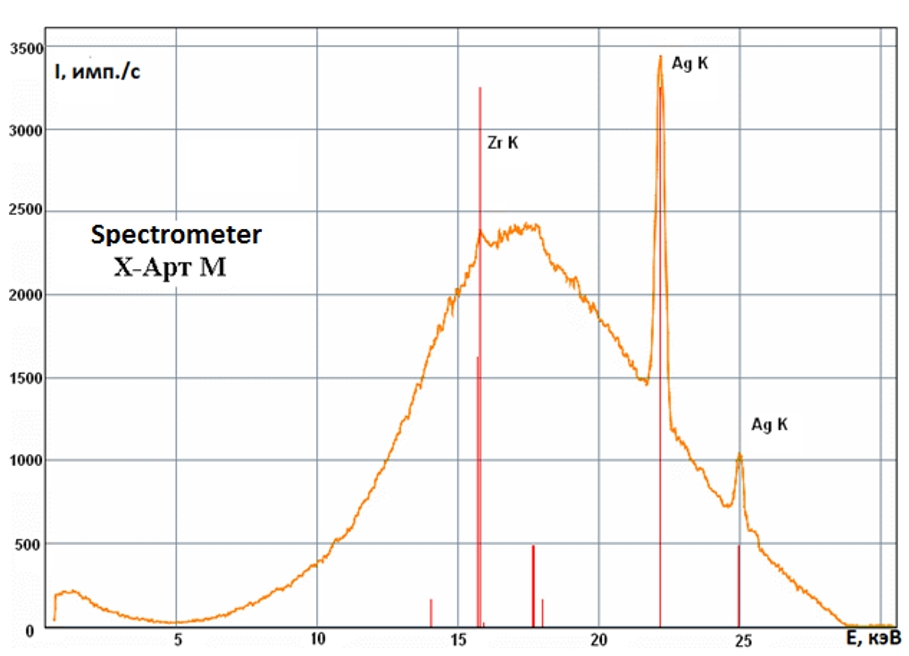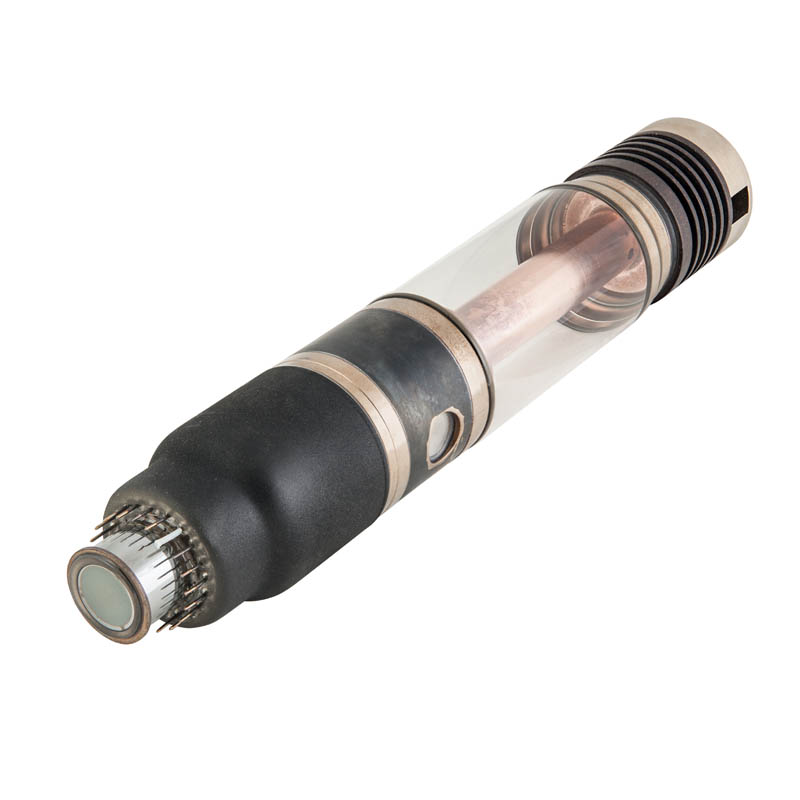X-ray tube with cold cathode (PRT) uses built-in photomultiplier tube (PMT), as a source of electrons, instead of traditional cathodes. X-rays are adjusted by light hit the PMT photocathode. Light-emitting diode, lamp or any other source can be used as the light source. PRT can be applied in medicine (X-ray tomography), biology, x-ray space communications, in equipment for X-ray structure and X-ray spectral analyses.
Advantages:
– Operation in continuous and pulse modes;
– In pulse mode provides 100% modulation in range from 100 Hz to 1 MHz with a du-ty cycle of 2 (the fill factor of 0.5);
– Zero lag;
– X-ray intensity is adjusted by light-emitting diode current;
– Purity of spectrum due to photocathode (cold cathode), as a source of electrons;
– Variation of PMT photocathode material allows control of the light of different range from UV to near-IR;
– Provides anode current up to 1 mA at low anode voltages (is important with Be window);
– The same device could be used to produce soft X-ray (at low voltages) and X-ray of medium hardness (at voltages up to 100 kV).
Construction design:
Samples of PRT of 44 mm diameter without Be window and 55 mm with Be window of 12 mm diameter. Anode materials: copper, silver, tungsten.
SPECIFICATIONS
| Without Be window | With Be window | |
| Tube diameter, mm | 44 | 55 |
| Tube length, mm (without divider) | 220 | 290 |
| Focus size, mm (is specified) | 0,8×1,2 | 1,0×2,0 |
| Voltage, kV | 3 ¸ 40 | 3 ¸ 100 |
| Anode current, mA | 0,01 ÷ 1,0 | 0,01 ÷ 1,0 |
| Operation speed, s | <1·10-7 | <1·10-7 |
| Power, W | ≤ 40 | ≤ 100 |
| Frequency range (in pulse mode), kHz | 0 ÷ 1000 | 0 ÷ 1000 |
DIMENSIONAL OUTLINE

SPECTRAL RESPONSE CHARACTERISTICS
(anode voltage of 29 kV, current of 250 µA).Zr K line corresponds to glass material. Anode is made of silver.

A list of the most complete specifications can be submitted under additional request.

